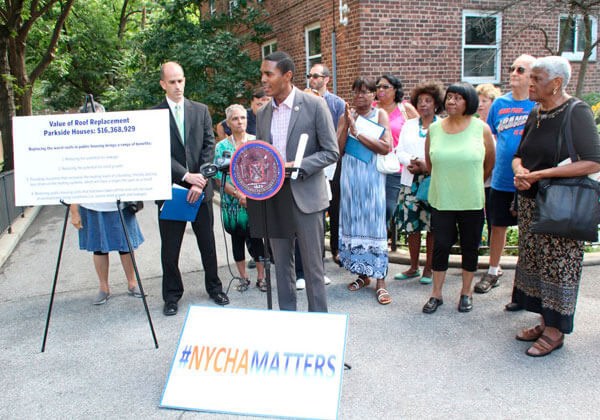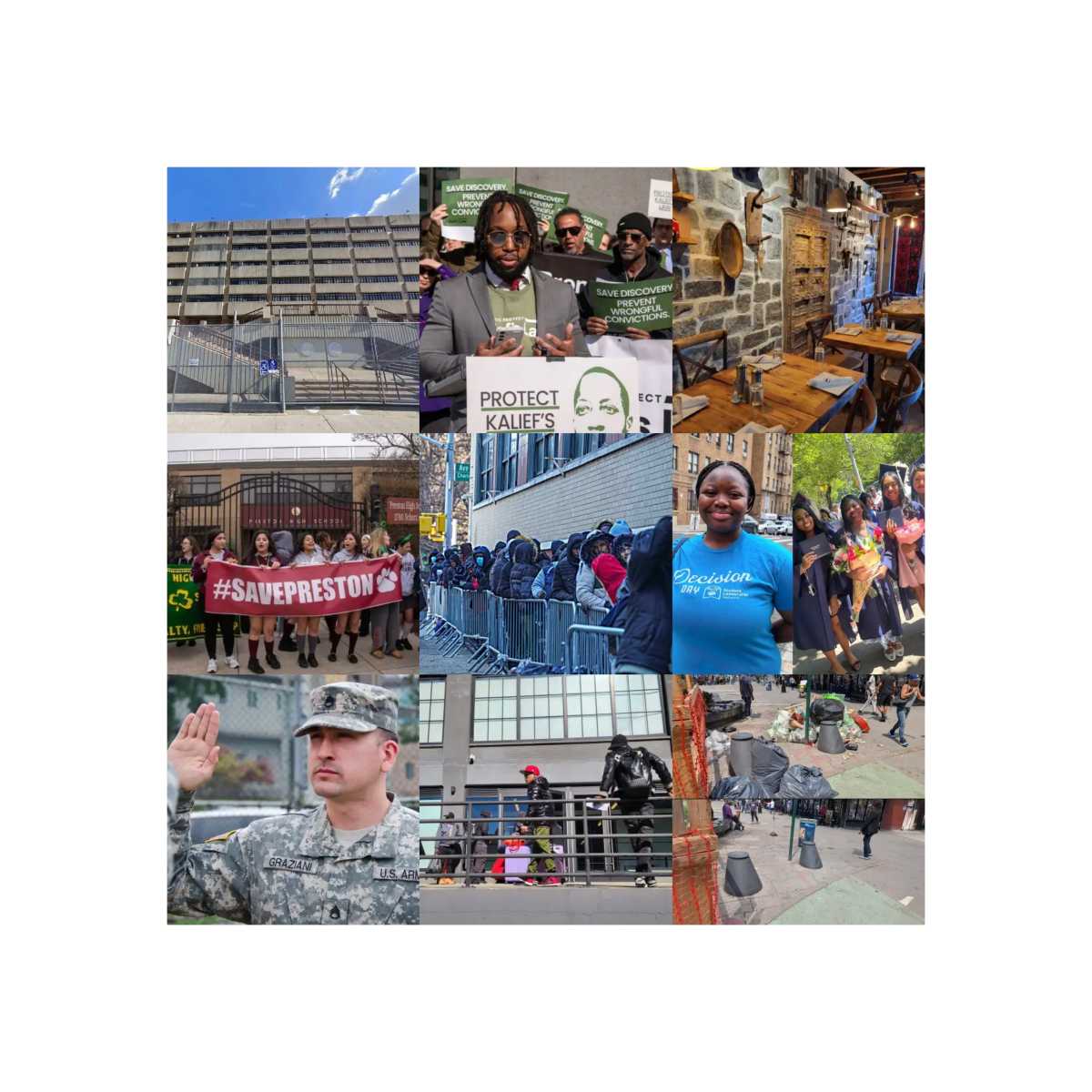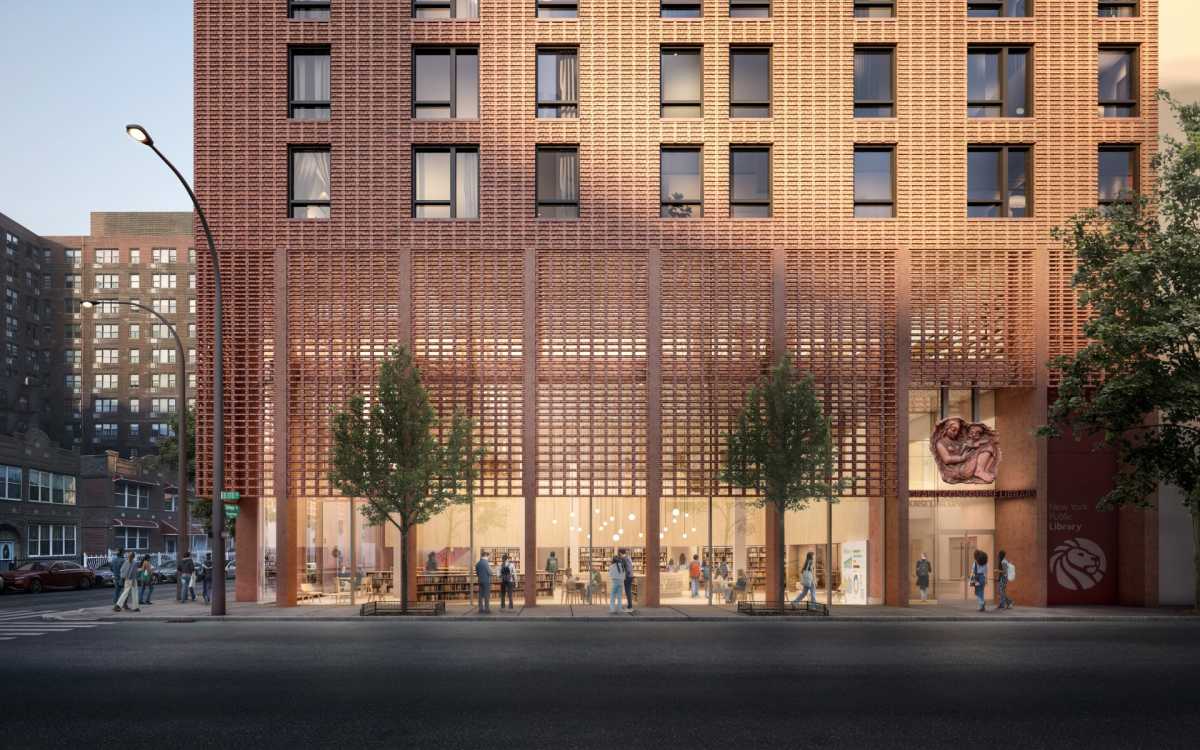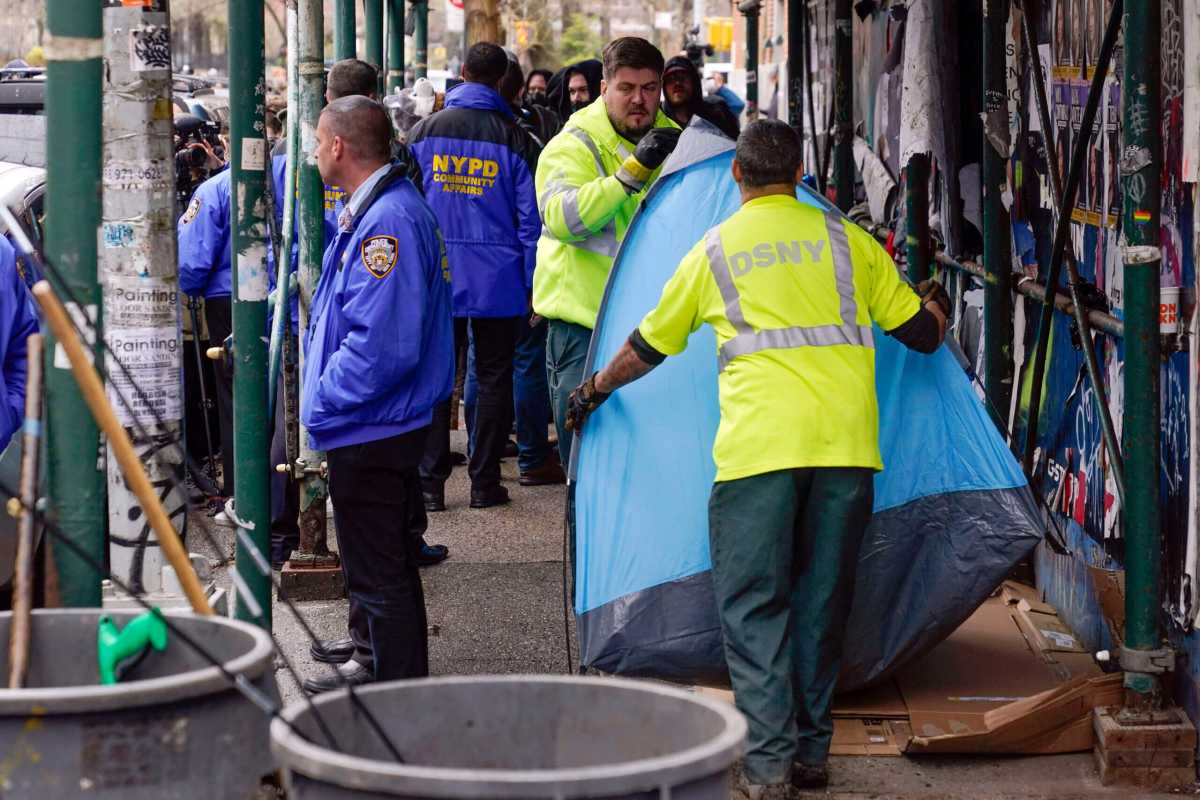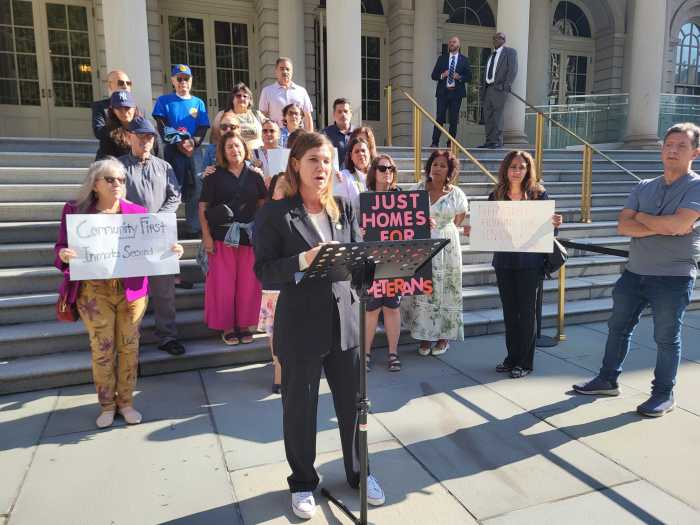City Council candidate Kenny Agosto remembers the building he grew up in, part of the New York City Housing Authority’s (NYCHA) McKinley Houses on East 161 Street, as regularly having problems. The heat and water didn’t always work. Elevators broke down. Hallways were dark, dirty and sometimes had puddles. Lead levels were high. The front door wasn’t secure. A sex worker had a mattress set up in the doorway area between the stairs and the roof.
“It wasn’t the safest. It wasn’t the cleanest, but it was a home,” he said in a phone interview.
City Council District 15 in the north Bronx, where Agosto and nine other candidates are running for office in a special election, contains thousands of residents in Section 9 housing developments run by NYCHA. They live in complexes such as Twin Parks East, Parkside Houses and the Bronx River Houses.
One point of contention going into Tuesday’s special election is the highly controversial NYCHA’s Blueprint for Change, which would provide more funding to NYCHA but also convert the city’s Section 9 housing stock to Section 8. Some residents fear the transition will create privatization within NYCHA. While the Blueprint would ultimately be approved by the state Legislature, city council members can play a pivotal role in advocating for or against its passing.
The district’s special election has 10 candidates vying for the City Council seat previously held by Richie Torres. He vacated the seat when he was elected to the U.S. House of Representatives in November.
The Blueprint for Change is NYCHA’s plan to open up new avenues of federal funding that would cover the roughly $40 billion needed to improve developments across the city.
These improvements include fixing elevators, building new facades and security systems, providing modern kitchens and bathrooms, upgrading plumbing and ventilation infrastructure, and addressing pest, mold, lead and garbage issues.
NYCHA’s plan right now is to take all of its Section 9 public housing developments and convert them into Section 8 housing which is private housing where a portion of rent is government subsidized. On its website, NYCHA says Section 8 Tenant Protection Vouchers are “more reliable and valuable” for funding repairs.
By forming what it calls a Public Housing Preservation Trust, NYCHA would transfer all of its 110,000 apartment units to the new entity. NYCHA would still technically own and maintain its developments while the trust would handle repairs and contract NYCHA workers to manage the buildings.
“Under the Blueprint residents will keep their full rights and protections permanently, including the right to establish resident organizations, automatic lease renewal, and succession rights,” according to NYCHA’s website. “Rent will continue to be capped at 30 percent of household income.”
However, many residents, including Citywide Council of Presidents Chair Danny Barber, don’t trust NYCHA’s promises and worry this is privatization even though NYCHA continues to say otherwise.
“We will not be bullied, and we will not be pushed and forced to go with what the Housing Authority wants us to go with,” Barber said at town hall in December.
When Agosto visits the NYCHA developments in his district, he finds that many residents don’t really understand what the Blueprint is and how it will affect them, he said. Throughout the pandemic, NYCHA has held virtual town halls on the Blueprint, which has kept elderly and tech unsavvy residents out of the loop.
“When they first started doing these meetings in the Baychester Houses, they would do it on the phone on a crackly line in a cold community room, and people wouldn’t get the full gist of it,” he said.
The Blueprint is currently being reviewed in the state legislature. The state Assembly’s Standing Committee on Housing held a public hearing on the matter in early December.
The Blueprint is similar to the federal Department of Housing and Urban Development’s Rental Assistance Demonstration program that was established under the Obama administration. About 9,500 of NYCHA’s Section 9 units have already converted to Section 8 under RAD to mixed results.
Candidate Bernadette Ferrara said she doesn’t have high hopes for the Blueprint.
“The Blueprint for Change sounds like another pie-in-the-sky ‘Save NYCHA’ plan,” she said in an emailed statement. “This was already going to be an uphill battle pre-COVID, but with the loss of federal, state and local tax revenue as a result of the still ongoing pandemic, lockdowns in New York City — and trillions of dollars in stimulus spending in the wake of the pandemic — it seems very unlikely.”
Ferrara said NYCHA has a shady history. She cited the $1,973 price tag for electricians to change one apartment’s light fixtures under NYCHA’s Project Labor Agreement. She also cited the 900 cases between 2016 and 2018 where NYCHA allegedly lied to the federal Environmental Protection Agency about successful lead abatement that resulted in children suffering from lead poisoning. And in 2017 Borough President Ruben Diaz Jr. allocated $139,000 for NYCHA to put new computer labs in the Bronx River, Sonia Sotomayor and Soundview houses, but only Bronx River has gotten them so far.
“So if the same crew is going to be spending this money and dealing with repairs under the same work rules, I have lots of questions before I can get behind this plan,” Ferrara said. “Long-suffering tenants in NYCHA developments can’t have their hopes dashed once again because of fraud, waste and mismanagement.”
Candidate Jose Padilla Jr. feels differently than Ferrara. He said he supports the Blueprint.
“Most of the residents want to live in a clean, safe, habitable environment where they get the services that they need,” he said. “I think from the looks of the proposal, that’s going to be the outcome.”
Candidate John Sanchez supports the Blueprint, too. He said it’s the only realistic way to get the $40 billion NYCHA needs.
He’s spoken with residents at the Murphy Houses, he said, which just went through substantial renovations under RAD. They said they appreciated the conversion to Section 8 housing.
“The residents prefer it 100%,” he said in a phone interview. “The fact that they have clean hallways, clean apartments, roofs there aren’t leaking – when they have an issue with their unit, they get a quick response. It’s day and night.”
The Parkside and Twin Parks houses are still Section 9. Sanchez said residents he talked to have very straightforward concerns.
“As long as my rent doesn’t go up, and my apartment is fixed, that’s what matters to me,” he recounted them saying.
The other candidates — Elisa Crespo, Ischia Bravo, Oswald Feliz, Altagracia Soldevilla, Latchmi Gopal and Ariel Rivera-Diaz did not respond to interview requests before publication. None of their campaign websites mention the Blueprint specifically.
Agosto said NYCHA would talk a big game about fixing the problems that he saw firsthand growing up at the McKinley Houses. But real solutions, he said, rarely came to fruition. That’s why he’s “cautiously optimistic” about the Blueprint.
“I’m still in the process of looking at it. I support investment in our federal housing stock. NYCHA gets so much money from HUD but it doesn’t go into the billions of dollars of repairs we need to do,” he said. “My mother was a tenant association member in the McKinley houses, and we knew we always had promises from HUD, we always had promises from NYCHA that were never fulfilled.”


